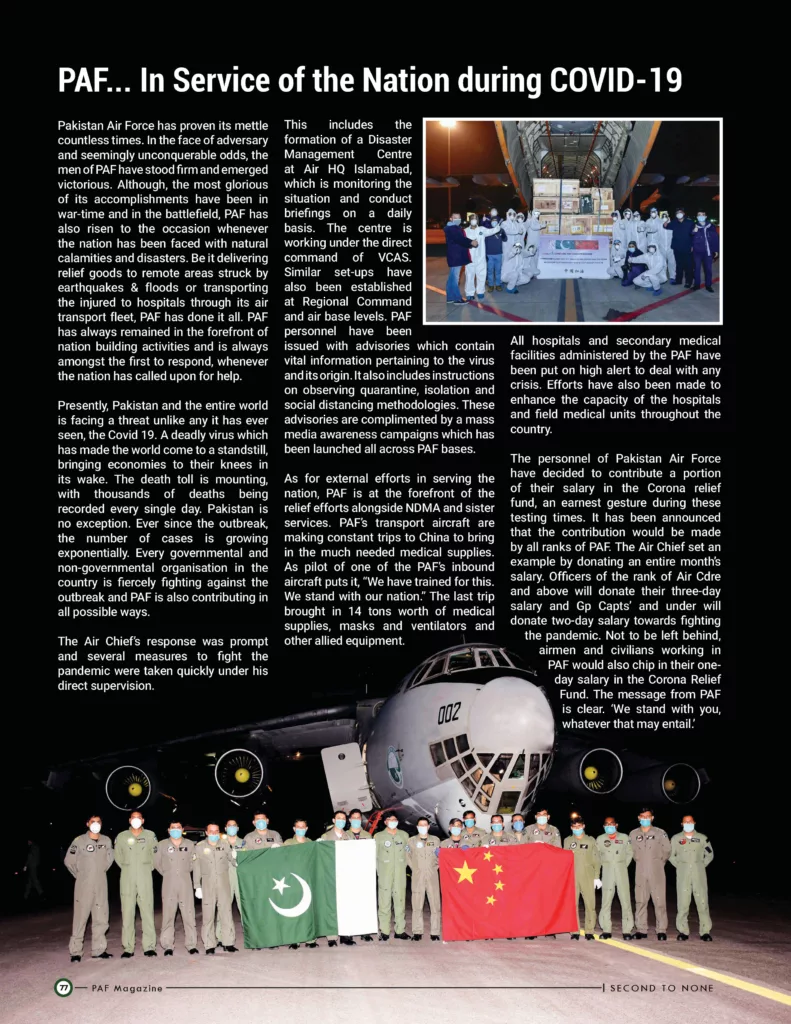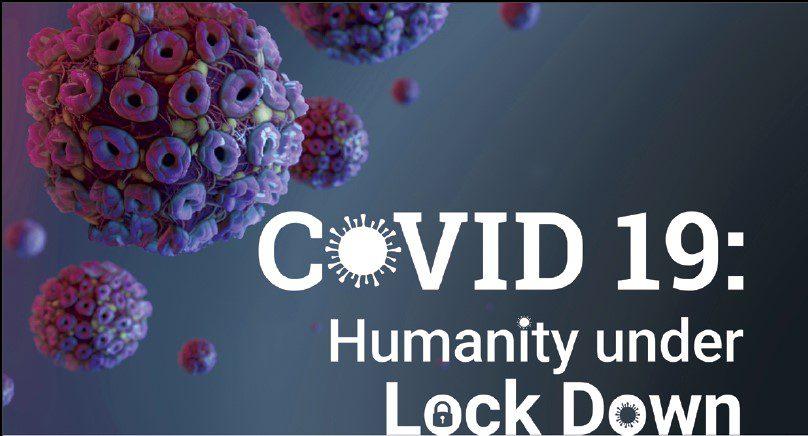Dr Tahir Naeem, Associate Professor of Microbiology, presently working in Department of Pathology Shalamar Medical and Dental College Lahore, gives an expert opinion regarding the menace COVID-19 that has gripped the entire humanity with fear.
With a bulging population of over seven billion and flights that cross continents within a matter of mere hours- the world has become a global village but since the last month this village is in a self-imposed curfew. Cities that usually never sleep look like scenes out of a post -apocalyptic novel. Empty roads, restaurants abandoned, hospitals over-loaded. Every human in a mask, avoiding contact, hoarding supplies, bloodshot eyes constantly set on screens announcing more deaths.
This is 2020 and life as we know it has changed drastically. Every cough appears to be suspect and every human is at risk; from world leaders to the common man. But is this unexpected? No. Scientists and infectious disease specialists have been warning the world about such a widespread contagion for years. The only question is – are we prepared enough?
What is Corona virus exactly?
The Coronaviruses (CoVs) are a large group of viruses infecting mammals and birds and producing a wide variety of diseases. The CoV nucleic acid is the largest known viral RNA, approximately 30 kb in length, of positive sense, single stranded, polyadenylated, and infectious. All human coronaviruses (HCoVs) are primarily respiratory pathogens. In animals, they cause a wide variety of diseases through multiple pathogenic mechanisms, and they have been noted to mutate frequently and infect new species. During the winter of 2002–2003, an alarming new disease appeared that was labeled as Severe Acute Respiratory Syndrome (SARS). The disease was quickly attributed to a new CoV. This outbreak originated in People’s Republic of China, with evidence that the virus was first derived from bats. The SARS epidemic was controlled through a massive effort at case identification and containment, and the last known case occurred in mid-2004. In retrospect, the emergence of SARS was consistent with what is known about CoVs as a group. Mortality of SARS-CoV was estimated to be around 10%. More recently, a related but different CoV producing severe respiratory disease had emerged.
It was named as the Middle East Respiratory Syndrome Coronavirus (MERS-CoV). The virus was quickly identified as a new CoV most closely related to bat CoVs. Human-to-human transmission was documented but appeared to be inefficient except in hospital settings. The animal reservoir of MERS-CoV is believed to be camels, although evidence suggests that bats may be infected with related viruses. The mortality in these cases was in the range of > 30%.
COVID 19:
A novel coronavirus, currently designated as COVID 19, was reported to be the cause of an outbreak of respiratory disease in Wuhan, China in December, 2019. The authorities in China reported that the etiologic agent was a novel coronavirus, as detected by electron microscopy and by genomic sequencing. The majority of the initial cluster of 45 cases from the Wuhan area has been associated with visitation of a seafood/live exotic animal market or by close contact with an ill family member. The virus has now been isolated from infected patients. Full genomic sequences have been published, which suggest that COVID 19 has approximately 70% amino acid homology to SARS-CoV and 96% to a known bat CoV.

China was the worst affected country in the beginning but with governmental resolve and with the cooperation of the people, it has overcome the epidemic in record time and is now ready to extend its help to those who need it. Italy was slow to respond and is now paying the price. The number of cases and deaths have already surpassed the Chinese figures and is likely to rise further. Almost every country has reported cases and the response is swifter in many developed countries to close down all the activities before it is too late.
Pakistan was able to avoid the introduction of the virus from China because firstly China did not allow residents of epidemic struck area to move out and secondly our government did not bow to the pressure of evacuating the Pakistani nationals out of the affected territory. But on the western border, entry of the pilgrims from Iran could not be stopped for long. Adding to the challenge was the inadequate arrangements for keeping those returning citizens in effective quarantine for the desired length of time. In this way, the individuals in the incubation phase and even those with symptoms were allowed to not only re-enter but also, to travel to their homes almost unhindered, thus spreading the virus very effectively throughout the land. The situation was the worst in Sindh, where the provincial government has ultimately decided to impose lockdown, thus restricting movement of the general public to a minimum. Other provinces and federal government are in the decision-making phase and leaving it to the people to practice self-restraints rather than imposing restrictions.
Now that we have to tackle the problem, following are the suggestions for the way forward. I thank Dr Naveed Rashid Consultant Infectious Diseases at Pakistan Kidney and Liver Institute Lahore for devising these guidelines which suit to our social and cultural norms and also are cost effective. More importantly, he has allowed anyone who wishes to use them, to do so without any restrictions. The theme of the guidelines says “How to fight COVID 19. Help your doctor from your home”.
It is important to understand the routes of spread of this virus. The first route is when after touching your hands to someone else’s hands or after touching a surface that is frequently touched by someone else’s hands, you touch your nose, eyes or mouth. The other possibility of getting the virus is when you are not wearing face mask and get close (less than 1 meter/3 feet) to a sick patient and the patient is also not wearing a mask while talking to you or coughing or sneezing. There are chances that the virus will find its way into your respiratory system (throat, larynx, trachea and lower respiratory tract). You can easily prevent the entry of virus into your respiratory system by washing your hands with soap and water for 20 seconds, sanitizing your hands with a skin sanitizer and/or by cleaning the surfaces with a detergent solution. Removing the virus from your hands or from surfaces is very easy because the virus is rendered ineffective by the use of soap and other detergents as it has a covering that is dissolved by lipid solvents and inactivated.
By staying at home and keeping these simple instructions in mind, you can help yourself and your country.
Unless it is an emergency or the call of duty (essential services), one should attempt to stay home. This is more important for those with chronic medical problems (Heart Diseases, High Blood Pressure, Diabetes mellitus, Chronic Obstructive Pulmonary Diseases, Cancer patients and those who are immunocompromised for any cause). Remember that it is also risky for the very young and for the elderly (> 60 years old) and they should choose to go out only when they must.
In case one has to go out, following general and specific guidelines can help minimize the risk:

- If required, only one person should go out. Always spare those with increased risk.
- One should wear a face mask.
- Maintain the social distance of at least 1 meter/3 feet.
- Avoid rush hours at public places such as markets and banks.
- Use personal transport (car, motor bike, others) if available. Disinfect the car steering or bike handle before starting the journey.
- If public transport has to be used, it should be with minimum chance of getting close to others (cab service, etc) and sit as far from the driver as possible. Avoid a shared ride and avoid physical contact with driver (hand shake) and surfaces. Don’t touch your eyes, nose and mouth during traveling or later unless you have washed or sanitized your hands.
- In case of larger public transport (bus, coaster, etc), prefer a single seat. Avoid physical contact with driver (hand shake), other passengers and surfaces. Don’t touch your eyes, nose and mouth during traveling or later unless you have washed or sanitized your hands.
Wash your hands with soap and water or use sanitizer immediately on leaving the vehicle.
When returning home after completing the tasks at hand, do the following after entering. This applies to all family members, guests and servants:
- No hand shake and/or hugging without washing hands and (preferably) face with soap and water.
- If one feels sick, immediately inform other members of the family and isolate in a separate room. If a separate room is not available, maintain social distance (> 1 meter/3 feet). Avoid coming close to vulnerable family members (very young, very old, with chronic ailments, immunocompromised).
- Call helpline 1166 or local medical service for further management
Corvid-19 has already shown its impact on economy, as well. Economy forecast is changing rapidly and the future is excessively uncertain. In the worst-case scenario, we will be facing an extreme recession lasting more than a year, with only vital public services and food supply remaining active. Most of us will depend on savings or work from home. On the optimistic side, we would be able to find the right type of medical combination, be it via testing or delaying threats, to somewhat reduce the corvid impact and returning to the normal routine in a few months.
The epidemic will disturb economy in several ways. First, it will interrupt the supply lines, the second effect will be the effects of quarantines, store closures, travel restrictions and other kinds of lock down. Then finally, it will have a huge effect on the regular income of the masses in terms of job loss and business closures. However, it is safe to assume that experts and world leaders will be fast to innovate and come up with better ways to tackle these challenges as they emerge.
Things to be done while at home:
I am sure that with these simple “To-do” steps, you can make a difference:
- Perform twice daily cleaning and disinfection of the high touch surfaces. These surfaces include main entrance door handle, other room handles, chairs arm supports, table tops, drawers, refrigerator surfaces and their handles, water taps and stairs railings.
- Stay safe and stay at home as far as possible.
- Keep the more vulnerable members of your family away from outdoor exposure.
- Maintain social distance from others to keep distance from possible virus attack.
- Follow the travel advisory and any other advice by the relevant authorities.
- Help yourself and your country by staying at home and not exposing yourself to unwanted risks.
- Seek medical help for you and your family members if need be.
Finally, the only true way we can fight COVID-19 is by being kind and logical. Nature will be unforgiving to all of us, if any of us are foolish enough to not take the prescribed precautions. Similarly, we need to ensure that our actions don’t have a negative effect on others. For example, hoarding has become a major issue. It is extremely important for us to comprehend that the only way we can fight such a virus is if we can flatten the contagion curve – which means that if we can stop or delay the spread of the virus. This cannot be done if everybody doesn’t have access to the supplies needed to counter the virus or survive. Such infectious diseases do not differentiate between rich, poor, young or old so social distancing and precaution is the name of the game till a vaccine is developed. Till then, stay indoors, wash your hands, isolate yourself and be considerate of others.








